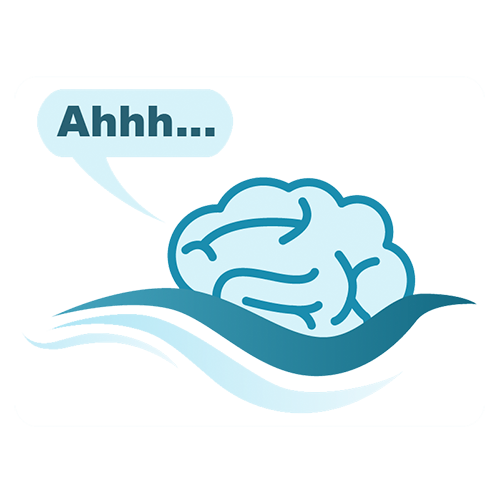70 Years of Floating
This year marks 70 years since the world's first float tank was invented in 1954. What began as fringe experiments and personal exploration has transformed into a mainstream wellness activity embraced around the globe.
As we reflect on the decades past, we wanted to share how far floating has come as both an industry and as a recognized tool for bolstering wellness and performance. As you can imagine, there’s a lot of history worth delving into (far more than we can cover in this short blog post), but we’ll be covering the high level eras and milestones over 7 decades of float tanks.
Read More
Buoyant Benefits - Mental and Physical Recovery in Athletics
When we think of sports athletes, we often think of their success in terms of physical ability, performance under pressure, and in-game strategy. However, much of the brilliance and outstanding success we see from top athletes is built on the less flashy foundation of practice, conditioning, diet, and recovery. Based on our article from last month about Dr. Matt Driller’s work around floating and sports, we’d like to look at some other research being done by Dr. Lydia Caldwell out of Ohio State University (now at the University of North Texas).
Float tanks have become increasingly popular in recent years, with professional athletes and weekend warriors using them as a tool for mental and physical recovery. Dr. Caldwell has worked with float tanks for years and presented at the 2017 and 2021 Float conferences. She has worked with special forces military and top-performing athletes to increase their performance and has incorporated float tanks into her research and protocols for both.
Read More
Sensory Deprivation or Sensory Enhancement? A History of Misleading Names
loating, despite its emphasis on stillness, has struggled in the past to settle on a name. For one reason or another, the attempt to aptly name and describe the experience of floating in the warmth of quiet darkness has led to monikers that fall short of reality. Of all the names associated with floating throughout the years, few have had the kind of staying power and winding history as its most misleading: sensory deprivation.
As a term, sensory deprivation was first coined by Canadian researchers in the 1950s. Ostensibly, they were studying phenomenal distortions in people working monotonous jobs, including truck drivers and radar observers. Beneath their sta
Read More
Breathing Easy - A Look at Floating and Blood Oxygen Levels
mmediately after her first float, Jeanine was already at a new level of relaxation. She says it was an “oh my gosh” moment for her, and recounted how all of her muscles were, “just so relaxed,” even after that single session. Over the following weeks and months, she became aware of another benefit that was even more profound – a rise in her blood oxygen levels, something she had been tracking regularly using an O2 ring.
Normal blood oxygen levels are around 95%, and before finding floating, Jeanine was seeing huge dips in her overnight blood oxygen levels, reaching as low as 77%.
Read More
The Science of Floating and Mystical Experiences
The ideas of altered states of consciousness, mystical experiences, and voluntary self-isolation often bring with them images of shamans, spaced-out hippies, geometric art, and vibrant colors, as exaggerated stories and tales of these experiences get passed around. These misconceptions are reinforced through movies and TV shows. As many who have emerged from the tank can attest, it is often a much more dreamy, ethereal, and calming environment than is typically conveyed on screen.
Read More
50 Years of Commercial Floating
In 1954, a young medical doctor and neuroscientist, John C. Lilly, donned a breathing mask and took the first descending steps into a large, fresh-water tank designed to cut out as much light, noise, and general sensation as possible. From that first iteration, it would be 19 years before floatation therapy was offered generally to the public, thanks to the work of Dr. Lilly, along with Glenn and Lee Perry.
Read More
Renaissance of Float Research
Like many float enthusiasts, if you ask us what floating is good for, our first answer is often, “What is it not good for?” Having witnessed floating help so many people, it’s easy to think of it as a panacea for all sorts of ailments and afflictions. However, despite decades of published research, some in the medical field still look at floating with a side-eye, skeptical of the claims made by floaters.
From curing insomnia to heightening your athletic abilities, there are personal stories from all over the globe of the benefits of floating. Unfortunately, large-scale clinical trials are very expensive and time-consuming, and most of these claims either receive funding for small-scale studies, or aren’t able to be pursued at all with any rigor.
Read More
Floating and Concussions
The search for pain relief can drive people in many unexpected, and sometimes downright odd, directions – float tanks among them. With the high concentration of Epsom salt, the tank can fully support the body without any areas of pressure on your back. This alone has been shown to help with inflammation reduction, faster recovery times, and general pain management, which helps explain why many big-name athletes and sports teams (like Steph Curry, Tom Brady, the Seahawks, the Dodgers, the Cubs, and many more) incorporate floating into their recovery programs.
Beyond physical recovery, floating has also been shown to have many positive mental effects, such as reducing anxiety and depression, while increasing energy levels and serenity. These particular benefits have been backed by scientific research, but since floating is still a largely under-researched field, many of the stories that claim benefits from floating haven’t been explored through official studies. There are, however, some benefits that are being explored through smaller scale research programs and case studies that, while not official, show promise and can help lead to new findings and larger scale studies in the future.
Read More








